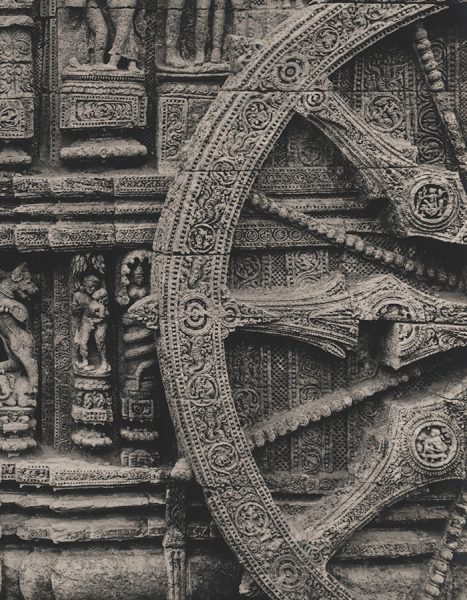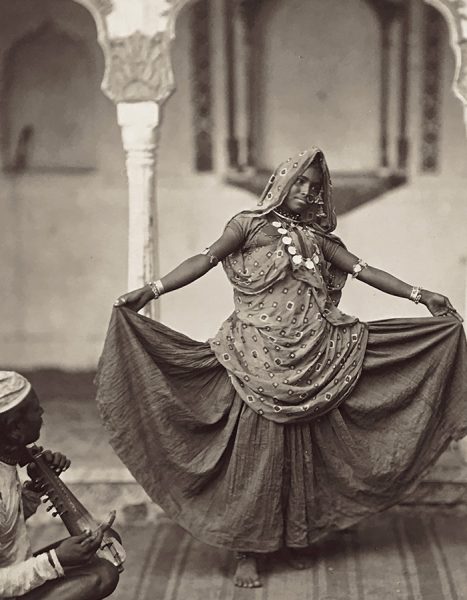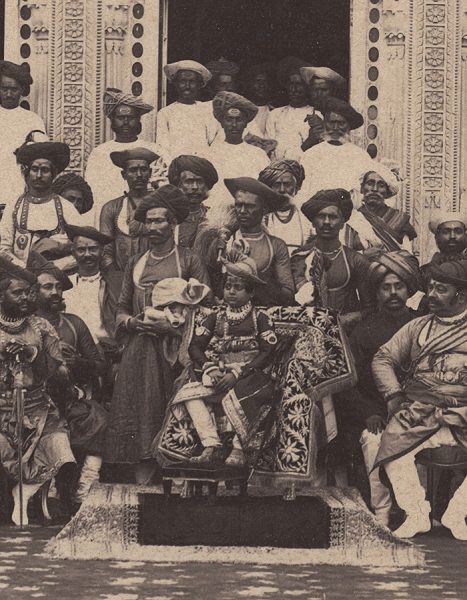Focus on India: Photography 1855-1925
12th May, 2023 - 9th June, 2023
Painting with Light and Shadow: Photography in 19th Century India
Prahlad Bubbar
In the second half of the nineteenth century, fashions and tastes changed with the invention of photography. The Indian Maharajas and princes took to this art with great gusto, having themselves lavishly portrayed, even practicing this new art.
The miraculous ability to fix light upon a surface, capturing reflections of the natural world and preserving moments in time, heralded a revolution in image making. India was at the forefront of this process; as early as January 1940, Thacker and Co. of Calcutta advertised the sale of daguerreotype cameras, just one year after their invention in France. Amateur photographers raced to experiment with the new medium, inspired by the abundance of India’s wild landscapes, majestic architecture and diverse people. These ‘endless objects of attraction or of curiosity’ were extolled by Captain Harry Barr at the inaugural meeting of the Photographic Society of Bombay in 1854: ‘where I would ask, can that art be more advantageously studied than under the sunny skies of Ind?’1
While little is known of the earliest practitioners of photography in India, from the 1850s we have clear evidence of its increasingly widespread use. Photographic societies appeared in the Presidency cities of Bombay, Calcutta and Madras. With these societies developed communities that organised events, exhibitions and the publication of journals, fostering an active culture of experimentation and exchange. Photography’s potential was recognised by the colonial government early on, who foresaw its use in the archaeological, military, scientific and ethnographic domains.
One of the most talented early amateurs was Dr. John Murray. A teacher and Principal of the Medical School in Agra, Murray took up photography around 1849. He is known for his images of the sublime Mughal monuments of Delhi, Agra and Fatephur Sikri. A selection of his prints was published in 1857 by Hogarth, London, under the title Photographic Views of Agra and its Vicinity.
Early photographs of India were often influenced by the idealised romanticism of the Picturesque, a movement that had characterised British painting of the late 18th century and found particular expression in India through the paintings of William Hodges and Thomas and William Daniell. Responding to a sense of responsibility for the preservation of India’s great monuments, the colonial administration began to fund photographic surveys. The desire to document and record also extended to sites of military interest. Photography had come to India at a time of renewed colonial expansion, particularly following the uprising of 1857. Returning to India in November of that year, John Murray was asked by the Governor-General Lord Canning to photograph locations associated with the uprising, including Benares, Kanpur and Delhi. As the 1850s progressed, increasing numbers of amateur photographers opened commercial studios.
Indians also played an important role as pioneers in the early decades of photography. Undoubtedly the most widely known and celebrated example is Raja Deen Dayal. Born in Sardhana near Meerut in 1844, Dayal studied surveying at the Thomson Civil Engineering College at Roorkee before getting a job at the Public Works Department of the Central India Agency. He took up photography around 1874 and his work soon attracted the attention of the establishment, notably Sir Lepel Griffin, with whom he toured Bundelkhand in 1882. A remarkably gifted photographer and astute businessman, Dayal climbed the ranks from aspiring amateur to become official photographer to the sixth Nizam of Hyderabad, the wealthiest princely state in India. He navigated 19th century society with great skill, operating amongst the British and Indian elites and crossing class, race and social divides. Having established a successful business with studios in Indore, Hyderabad and Bombay, he was granted the Royal Warrant from Queen Victoria in 1887. His work is known for its sophisticated gradation of tone, often achieved by using different lengths of exposure for selective areas of the print. In addition to his technical skill, the artistic merit of his photographs was recognised by his contemporaries. On his death in 1905, the Bombay Gazette described Dayal as ‘the first great photographer and artist’.2
Another significant result of the arrival of photography in India was the evolution of the photographic portrait, rivalling miniature painting as the primary medium for historical documentation and the presentation of power and prestige. Early portraiture was predominately ethnographic or focused on courtly elites. From the 1890s onwards portraits were influenced by an increasing trend towards pictorialism, coupled with a Victorian regard for high ceremony. This was inspired in part by trends in European painting, contributing a greater degree of lyricism and emotional sentiment to portrait photography. A significant factor in this process was the development of the photographer’s studio. Portraits acquired props such as European furniture, elaborate backdrops, flowers and rich drapery. The studio became a place of transformation, where identities could be created and status proclaimed.
The photographs in this presentation illustrate significant aspects of the development of early photography in India. They act as windows into the past, preserving moments lost in time. In Europe, the discovery of photography engendered a debate in which many decried its lack of artistic merit in relation to painting. This was not the case in India. As noted by Samuel Bourne, one of the foremost photographers of the subcontinent during the 1860s, early photography in India was considered one of the ‘fine arts’3. The creative vision of these early practitioners is evident here – photographers drew on multiple influences, past and present, in the development of a new medium of painting with light and shadow, through which image making was transformed.
References:
1 Journal of the Photographic Society of Bombay, no. 1 (January 1855).
2 Bombay Gazette (7 July 1905), p. 3.
3 Samuel Bourne, ‘Ten Weeks With the Camera in the Himalayas’, British Journal of Photography (15 February, 1864), p. 70.





